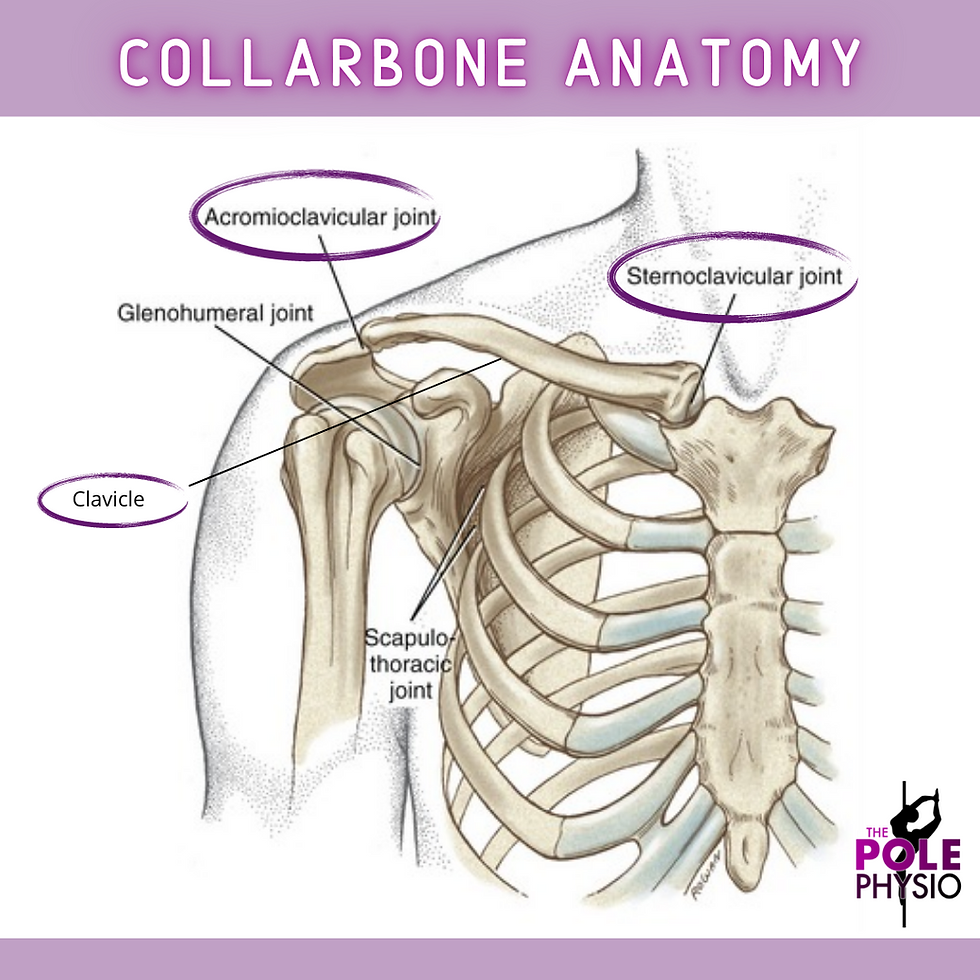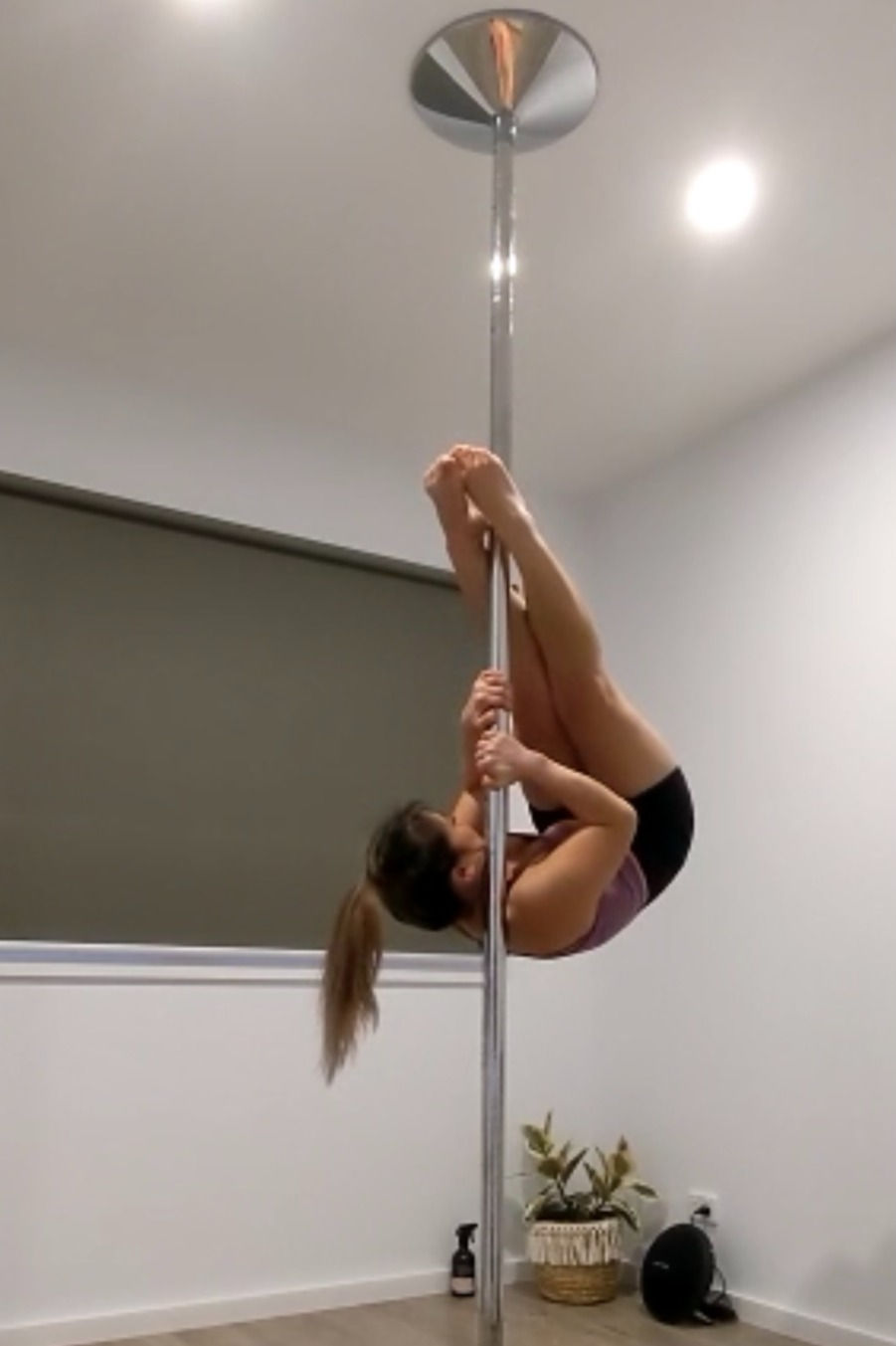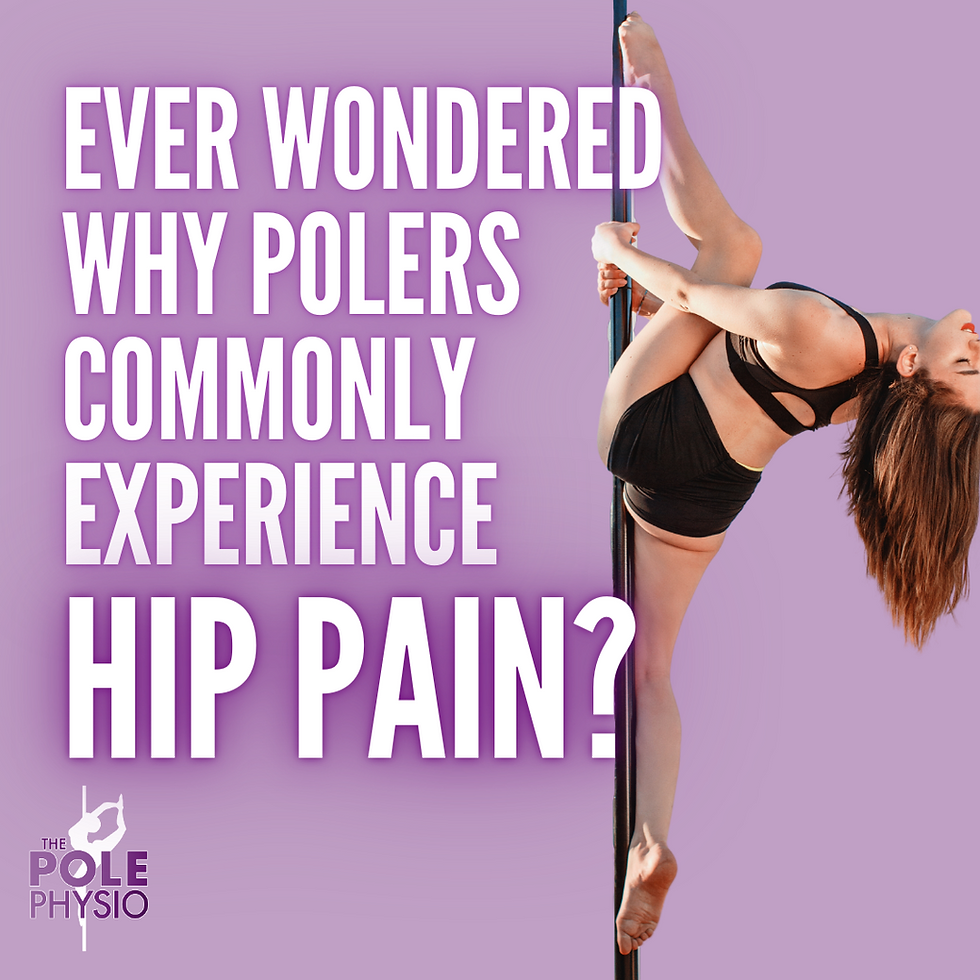Injury Spotlight - The AC Joint & Collarbone
- Simone Muscat

- Jul 21, 2021
- 4 min read
Updated: May 20, 2023
Learning new pole tricks comes with the incredible excitement of feeling strong in a new move and well… new pole kisses too! Remember that first time you hung out in an outside leg hang and a week later it still looked like you got kicked in the back of the leg? Well, this is an all too common feeling when learning how to shoulder mount, except this time the bruises and pain are sitting a little higher up towards the collarbone.
In today’s blog we are going to discuss the anatomy of the collarbone, break down common AC joint injuries and what we can do to avoid this pain whilst shoulder mounting! Let’s get to it!
Anatomy
The collarbone (aka clavicle), is located between our breast bone (sternum) and the shoulder blade (scapula) and connects to the body via the shoulder bone known as the humerus. It’s one of the first bones to be created in a foetus and one of the last ones to completely fuse around the age of 25. This bone not only allows movement of the shoulder blade to occur, but it acts as a strut for the upper body whilst playing the vital role of protecting some key blood vessels and the nerve supply to the arms (brachial plexus – medially).

The collarbone connects to the breastbone via the sternoclavicular joint, and to the shoulder via the acromioclavicular joint also known as the AC joint. Both of these joints serve the very important role of suspending and transferring forces from the whole upper arm from the trunk. Any injury to these joints can result in some real disability.
Pole Injuries
In pole, specifically with shoulder mounts, there can be a variety of injuries that occur to this area when things go wrong. We are going to briefly break down the most relevant three injuries for pole dancers now:
AC joint sprains
AC joint sprains commonly occur from direct trauma to the joint such as a fall onto the area out of a shoulder mount – ouch! This may result in mild to severe tearing of the ligament. The milder injuries (grade 1-3) can usually be conservatively managed with a good physio, whereas grade 4-6 usually require surgical intervention in addition to physiotherapy/rehabilitation.
Clavicle bone bruise
Bruises in bone commonly occur in pole from incorrect technique or a nasty knock to the surface from a fall that doesn’t result in fracture or sprain. This type of injury can generally be avoided with correction of technique and physiotherapy guided rehabilitation. Hold on tight as we will discuss correct shoulder mount technique shortly!
Distal AC joint osteolysis
Lastly these types of injuries are classified as repetitive microfracture of the clavicle resulting in sharp pain in the AC joint. As each microfracture attempts to heal, the bone is remodelled in a jagged and uneven way, placing considerable stress on the AC joint, heading into a deteriorative state. This injury is common in pole dancers and weightlifters due to the heavy overhead pushing force we exert on the shoulder. This injury, when caught early, can be conservatively managed well with physiotherapy. Some more severe cases may require surgical management.
Rehab
Regardless of the injury, they all have the same thing in common to fix the issue – rehab! Your physiotherapist can assist you in determining the cause of your injury and addressing any technique and strength-based issues in your rehab program. Alternatively, appointments can be made online with The Pole Physio to assist with these injuries.
Getting collarbone pain when you're transitioning from your shoulder mount to front crucifix (inverted leg hook) ???
When starting out learning to shoulder mount it can be helpful to manoeuvre your body on the pole in certain ways to reduce contact on the collarbone.
To reduce collarbone contact in this transition aim to:
keep the back as straight as possible
drive the hips up the pole to hook the knees high up.
A curved spine and low leg hook will increase collarbone contact as you transition from the mount to crucifix position.


What about when you're exiting your shoulder mount?
To reduce collarbone contact on your exit:
1. Place your hands at belly button height on the pole
2. Drive your shoulders & chest towards your knees by actively crunching your abs. This point is key!
3. Push your hips away from the pole (safety first!) and straight your legs to an ankle hook position
4. When safe to take the feet off the pole keeping your hips away from the pole and towards the floor at all times.




And remember: this information does not replace a teacher or a spot when learning to shoulder mount exit. It can be used in conjunction to your teacher's instructions.
Magic right!?
Well there you have it, everything you need to know about collarbone based injuries for today.
Are you recovering from a collarbone based injury and can’t seem to make it back to the pole? Or just not sure where you’re going wrong with your pole technique?
Online telehealth appointments can be booked with the Pole Physio via our ‘Book Online’ page that can be found here. Assessment and tailored rehabilitation are provided in accordance with best practice and evidence-based treatment to help you unleash your 'poletential'.
Until next time, train safe
The Pole Physio
x







Wakad Wagholi Viman Nagar Vishrantwadi Shivajinagar SB Road Ravet Pune best city Pimple Saudagar Pirangut Marunji Nigdi Pashan Pimpri Chinchwad Magarpatta Lohegaon Koregaon Park Kalyani Nagar Kharadi Pune city Service Pune Star Hotel Hinjewadi Pune desire Pune Airport city Akurdi Aundh Balewadi Baner Bavdhan Bhumkar Chowk Pune city Chakan Dehu Road Deccan Gymkhana Dhanori best city
Great overview of AC joint and collarbone injuries for pole dancers! Proper technique and rehab are key to avoiding pain and speeding recovery. Specialized help like The Pole Physio is invaluable. When researching injury rehab, I found Assignment Help Hobart also emphasizes the importance of clear, expert guidance. Thanks for these helpful tips!
Dupree always emphasizes learning — whether it's upgrading gear, attending workshops, or shooting personal projects. Growth never stops. Photos that stick are the ones that say something. Dupree Armon encourages photographers to find their voice, use their lens to express their views, and shoot with intention.
Budgeting is the backbone of any Corporate Event Planning Dubai process. A well-thought-out budget should account for all major expenses including venue hire, equipment, staffing, and marketing. HAZE UAE assists in crafting a realistic budget that maximizes your resources without compromising the quality of your event. By identifying potential cost-saving opportunities, they ensure that every penny contributes to the event’s success.
Great post! The AC joint is often overlooked but plays such a crucial role in shoulder movement. As someone who works in academic writing, I can relate to the importance of attention to detail, just like in CDR writing services in Australia. It's all about precision, whether in anatomy or professional reports. Keep up the great work!